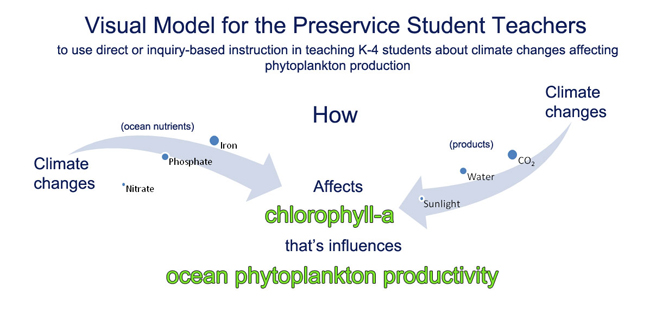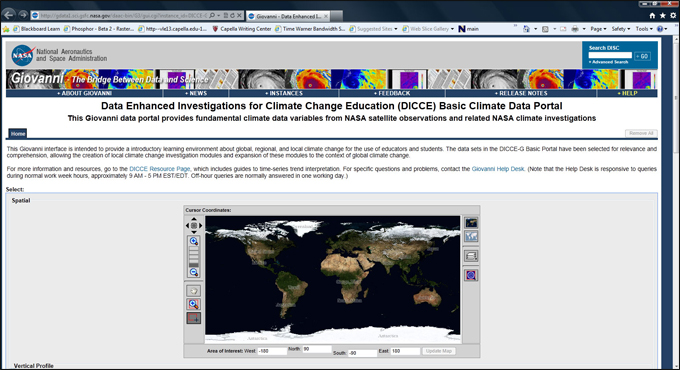|
STEM/Climate Change, Mr. Ervin Howard, Elizabeth City State University |
|
 |
| Creating Climate Change Lessons for K-2 Learning using the Technology Integration Planning Model (TIP Model-Phase II) |
| |
Mentor: Mr. Ervin M. Howard, EDUC 203
Description: The preservice students of EDUC 203-02 continue their development of K-2 climate change lessons. The preservice student teachers are paired in teams (two team members per group). Each team is responsible in presenting a climate change lesson based on factors such as sunlight, carbon dioxide, water temperature, ocean nutrients, and chlorophyll that contribute to the phytoplankton blooming in an area of the North Atlantic region. In Phase II of the TECH-Pack model, the preservice student teachers supported their climate change lessons with the Common Core State Standards and the Next Generation Science Standards. They identified specific technologies used in the climate change lessons and supported them with the ISTE technology standards. These climate change lessons serve as a thematic unit that identifies not only one factor contributes to the phytoplankton blooming but all factors working in unison based on specific climatic changes that occur in the year 2007. During phase II, each team will develop a webquest and lesson plan. |
| |
 |
| |
 Carlton Turner Carlton Turner
|
 Luci Wall Luci Wall
|
Climate Change Team: Carbon/Carbon Dioxide
Investigation: Identify low and high levels of carbon dioxide in the North Atlantic region within the months of the 2007. Identify other factors or parameters that might influence carbon dioxide production toward the phytoplankton blooming. |
 Coralee Phillips Coralee Phillips
|
 Allison Rowe Allison Rowe
|
Climate Change Team: Sunlight
Investigation: Identify low and high levels of sunlight in the North Atlantic region within the months of the 2007. Identify other factors or parameters that might interfere or influence sunlight for oceanic phytoplankton blooming. |
 Joshua Joyner Joshua Joyner
|
 Ava Simmons Ava Simmons
|
Climate Change Team: Water Temperature
Investigation: Identify water temperature levels in the North Atlantic region within the months of the 2007. Identify other factors or parameters that might interfere or influence water temperature levels on the oceanic phytoplankton blooming. |
 Gilbert Avent Gilbert Avent
|
 David Nichols David Nichols
|
Climate Change Team: Oceanic Nutrients
Investigation: Identify factors in predicting where phytoplankton can obtain these oceanic nutrients in the North Atlantic region within the months of the 2007. Identify abundance and scarcity due to climate changes within the year 2007. |
 Jessica Hathaway Jessica Hathaway
|
 Kelsey White Kelsey White
|
Climate Change Team: Chlorophyll
Investigation: Identify factors influencing oceanic phytoplankton's chlorophyll production during the months of the year 2007. |
|
| |
 |
| |
 |
| |
|
|





 Carlton Turner
Carlton Turner Luci Wall
Luci Wall Coralee Phillips
Coralee Phillips Allison Rowe
Allison Rowe Joshua Joyner
Joshua Joyner Ava Simmons
Ava Simmons Gilbert Avent
Gilbert Avent David Nichols
David Nichols Jessica Hathaway
Jessica Hathaway Kelsey White
Kelsey White